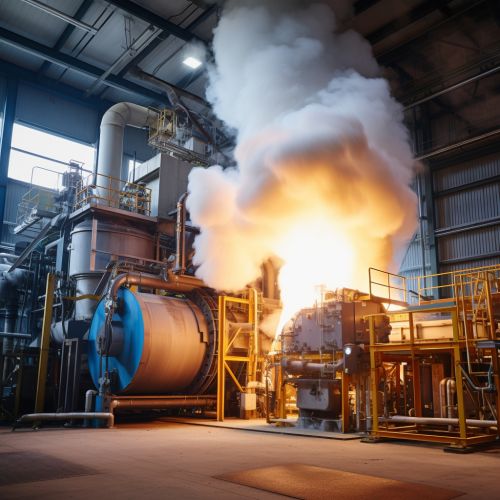Thermal desorption
Introduction
Thermal desorption is a remediation method used to clean contaminated soil and waste material by heating it to a high temperature. This process is designed to separate heavy metals and certain organic compounds from soils, sludges, and sediments, thereby reducing the volume of hazardous waste. The process involves the use of heat to increase the volatility of contaminants, which enables their removal from the solid matrix soil or waste material.


Process
The thermal desorption process begins with the excavation of contaminated soil, which is then fed into a thermal desorption unit. The soil is heated to temperatures typically ranging from 90 to 500 degrees Celsius, depending on the type of contaminants present and their volatility. The heat causes the contaminants to vaporize, separating them from the soil particles. The vaporized contaminants are then collected and treated or disposed of separately, while the cleaned soil can be returned to the site or used elsewhere.
Types of Thermal Desorption
There are two main types of thermal desorption systems: low-temperature thermal desorption (LTTD) and high-temperature thermal desorption (HTTD).
Low-Temperature Thermal Desorption
LTTD systems operate at temperatures between 90 and 320 degrees Celsius. These systems are typically used to treat soils contaminated with petroleum hydrocarbons, such as gasoline and diesel fuel, as well as some volatile organic compounds (VOCs).
High-Temperature Thermal Desorption
HTTD systems operate at temperatures between 320 and 500 degrees Celsius. These systems are used to treat soils contaminated with semi-volatile organic compounds (SVOCs), pesticides, and certain heavy metals.
Advantages and Limitations
Thermal desorption has several advantages over other remediation methods. It is capable of treating a wide range of organic and inorganic contaminants, and it can achieve high levels of cleanup in a relatively short time. In addition, the process does not produce hazardous combustion products, as it operates under non-oxidizing conditions.
However, thermal desorption also has some limitations. It is not effective for treating soils contaminated with non-volatile compounds, such as certain heavy metals and radionuclides. The process can also be expensive, particularly for small-scale projects, and it requires a significant amount of energy.
Applications
Thermal desorption has been used successfully to clean up contaminated sites in many parts of the world. It is particularly effective for treating soils contaminated with petroleum hydrocarbons, chlorinated solvents, and certain pesticides and herbicides. The process is also used in the treatment of industrial waste, such as sludges and sediments.
Environmental Impact
The environmental impact of thermal desorption is generally positive, as it reduces the volume of hazardous waste and can restore contaminated land to a usable state. However, the process does produce emissions, including greenhouse gases, and requires a significant amount of energy. Therefore, it is important to manage these impacts through careful design and operation of the thermal desorption unit, as well as appropriate treatment and disposal of the recovered contaminants.
